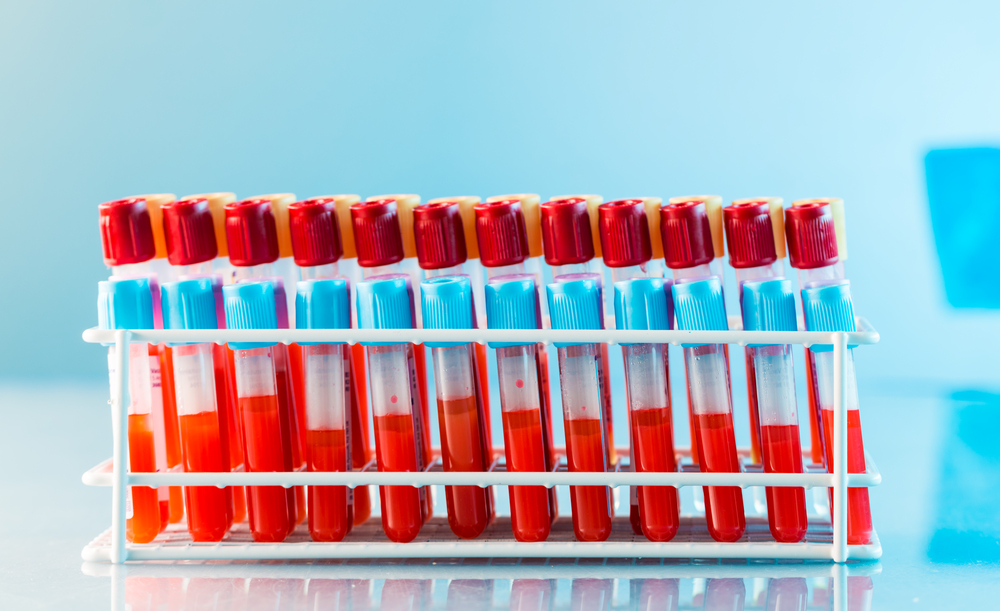There’s No Need to Fear a Little Blood

As I write this, it’s Nov. 1 and we’re observing All Saints’ Day. On this day, I remember my mom, who passed away last June.
Her final resting place is many islands away from where I live, so I am unable to pay her a visit. Nevertheless, I offer her my prayers and I vow to give part of my life to my future daughter the same way my mother did for me. In my heart of hearts, I believe she is somewhere close, looking after my little Melanie Citrine.
As my daughter grows up, I will tell her stories about her grandmother, whose name she will carry. I will tell her about grandmother’s strength and how she bravely battled two types of cancer with impeccable courage. But I won’t tell only the “inspirational” stories. I also will share with my daughter my mother’s fears. One of them stood out: a fear of blood.
My mother was very intelligent. She’d had a difficult childhood after her own father passed away from lung cancer at 36. Despite moving in with relatives and taking care of five younger siblings, she still managed to breeze through her studies. She graduated at the top of her class in both elementary and high school. She could have been a doctor, but a few things prevented her from pursuing that path. One was a lack of funding. But a much bigger roadblock was her fear of blood.
Ironically, I am bound for life to a man who bleeds all the time. My husband Jared has hemophilia. Inevitably, I often witness blood, as bleeding is part of his life. Come to think of it, external bleeds are preferable for a person with hemophilia. Internal bleeds are scarier because they can go undetected until they have progressed.
A few days ago, Jared injured himself, sustaining gashes on his arm and side. He had a seizure while working out, which probably caused him to knock over a lamp. Some pieces of the broken lamp might have scraped the side of his body, creating two small cuts and a medium-sized laceration. I didn’t witness this, because pregnant little me happened to be in the bathroom at the time.
Part of me felt badly that I wasn’t able to stop it from happening. Thankfully, my rational side kicked in. (Could it be motherly instincts, a part of me that’s learned to do better than blame myself and respond instead?) I quickly grabbed some packets of gauze, micropore tape, iodine, and cotton and set out to dress my husband’s wounds.
The wounds held for a while, but before long, blood oozed through the gauze coverings. In just a few minutes (pardon the graphic mental image!), red liquid began to drip from my husband’s arm. Yet even as this happened, we continued laughing. Witnessing the phenomenon of bleeding was more intriguing than frightening to us. Perhaps we are used to injuries and knew that two or three relatively tiny wounds wouldn’t cause much harm. (He did need a transfusion, however, to get the blood to clot.)
Around this time, Jared and I wondered what my mom would have thought about me dating a person with hemophilia. Don’t get me wrong — she knew about Jared’s illness and had seen him get into an accident once. But had she been around during a typical incident like this, how might she have reacted and felt?
I wouldn’t blame her if seeing my husband’s bleeds would have freaked her out. After all, a hemophiliac injury can be scary to anyone not used to seeing a lot of blood. People typically associate wounds with pain or life-threatening injuries.
Choosing to be with Jared, however, has allowed me to unlearn these associations and respond differently to injuries. Instead of panicking at the sight of blood or injury, I’ve learned to think about first-aid options. Then, Jared and I discern whether the injury requires a factor infusion.
I only hope that my growing first-aid knowledge can be put to good use when I need to treat my future daughter’s scrapes and bruises. I also hope that seeing Daddy power through injuries inspires her to be just as brave and strong.
In the last six years of my mom’s life, she battled lymphoma and leukemia, two blood-related diseases. She braved numerous blood extractions, needle insertions, and other procedures. She had pain and discomfort. But she did her best to hold on so that she could keep living for the people she loved. She faced her fears and traveled beyond them. I can imagine her telling me to do the same in the face of life’s challenges.
Note: Hemophilia News Today is strictly a news and information website about the disease. It does not provide medical advice, diagnosis, or treatment. This content is not intended to be a substitute for professional medical advice, diagnosis, or treatment. Always seek the advice of your physician or another qualified health provider with any questions you may have regarding a medical condition. Never disregard professional medical advice or delay in seeking it because of something you have read on this website. The opinions expressed in this column are not those of Hemophilia News Today or its parent company, Bionews Services, and are intended to spark discussion about issues pertaining to hemophilia.







Leave a comment
Fill in the required fields to post. Your email address will not be published.